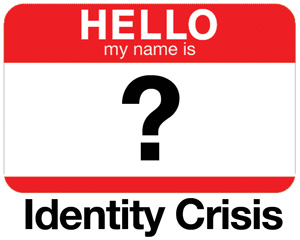We at CallFire often struggle with how to describe what it is that we do. And, as someone fairly new to the company, this is the first question I want a real answer to. What is it? How does it work? Why is it good?
 One of the difficulties in describing CallFire is that it offers such a broad array of functions. Businesses use CallFire in completely different ways. Our company tends to describe our suite of products as “cloud telephony,” but that doesn’t seem to clarify much. The best way I’ve been able to describe CallFire is it helps manage big calling tasks. These tasks might be calling a long list of people, or handling a large amount of calls coming in, and routing those calls to the right place. Anything with a phone that might seem daunting, CallFire makes manageable. Are we clearer yet?
One of the difficulties in describing CallFire is that it offers such a broad array of functions. Businesses use CallFire in completely different ways. Our company tends to describe our suite of products as “cloud telephony,” but that doesn’t seem to clarify much. The best way I’ve been able to describe CallFire is it helps manage big calling tasks. These tasks might be calling a long list of people, or handling a large amount of calls coming in, and routing those calls to the right place. Anything with a phone that might seem daunting, CallFire makes manageable. Are we clearer yet?
Not really. I’m not entirely satisfied with that answer. It seems incomplete—CallFire doesn’t just help businesses manage, it helps businesses grow. It’s a business tool and a marketing tool. For instance, text marketing is becoming a bigger deal. We help businesses do that. We even help businesses retain their customers and build loyalty by enabling them to send automated appointment reminders, or set up customer satisfaction surveys. So now, it’s not really about making businesses more manageable, it’s about making them smarter.
 Great. What’s a nice, concise way to convey all that? “CallFire: a really smart way to manage your phone operations that will potentially also help you serve your customers better and get new ones so that you can make more money.” Fit that on a business card, please. Thanks.
Great. What’s a nice, concise way to convey all that? “CallFire: a really smart way to manage your phone operations that will potentially also help you serve your customers better and get new ones so that you can make more money.” Fit that on a business card, please. Thanks.
I’m still at a loss. So I’m trying out this whole crowdsourcing thing. I’m going to describe some of the ways CallFire is being used, and you guys out there in Internetland tell me how best to encapsulate it.
CallFire in a (Very Large) Nutshell
- Our Cloud Call Center enables businesses to call a lot more people in a lot less time. For instance, political organizations use CallFire for volunteer phone banking, and insurance agents use CallFire to get in touch with their leads. CallFire saves them the hassle of dialing numbers by hand. You simply upload a list (an Excel file or CSV) and the CallFire system dials them for you. It’s even intelligent enough to skip bad phone numbers and busy signals, so it’s just people talking to people. CallFire also has a feature called SmartDrop, where if the agent hears voicemail pick up, they can press a button and leave a pre-recorded message—no waiting for the beep. CallFire also provides call data such as the length and time of each call, and can record each call for quality assurance monitoring.
See, that was a 140-word paragraph to describe one product. There are four more! Woe is me. Alas. Moving on…
- Hosted IVR is our second product. IVR is complicated because we offer both inbound and outbound IVR, and, of course, they do different things. First off, IVR stands for Interactive Voice Response. It’s better described as a virtual receptionist or a phone tree. You know when you call a business, and you hear, 'press 1 for this and press 2 for that?' That’s an inbound phone tree. But of course, that begs the question, what’s an outbound phone tree? An outbound phone tree works the opposite way. The business calls you, and then gives you phone menu choices. So a business might use an IVR to conduct a satisfaction survey. Example: “Would you recommend us to your friends? Press 1 for yes, 2 for maybe, 3 for no.” Automated phone polls can also collect RSVPs for an event, ask about new product offerings, or get other feedback.
 Um… any ideas for that big umbrella phrase to encapsulate all this yet? All right then. Here’s the next product.
Um… any ideas for that big umbrella phrase to encapsulate all this yet? All right then. Here’s the next product.
- Call Tracking is generally used in marketing campaigns. Let’s say you’re a real estate agent. You get one of those bus benches with your picture on it, and you put an ad in the local paper. With call tracking, if you put one phone number on the bench and a different number in the paper, you can gauge how many people are calling as a result of the bench versus the print ad. Is either one worth the cost? Call Tracking will help you know.
Pretty clear, right? Maybe? Hopefully? No? Next…
- Voice Broadcast is when you record a message and then send that message to a whole bunch of people. It happens a lot during election season. Last November, for instance, I got a call that Susan Sarandon had recorded, encouraging me to vote yes on Prop 19, California’s “pot amendment.” Voice Broadcast is often confused with Outbound IVR. They are very similar, but if Susan Sarandon were to say something at the end of that recorded message like, “Press 1 if you’d like to donate to support Prop 19, or 2 to be connected to your representative's office,” that's an Outbound IVR. The IVR would then connect the call to a live person who could take the donation information or forward the call on to my Congressman's office. Voice Broadcast, on the other hand, would be more appropriate if the message was all you needed to convey, without any further action. It’s often used for emergency notifications, like announcing school cancellations. Oh, to get even more confusing, if you only have one key-press that will forward the call on somewhere, the Voice Broadcast campaign can handle that. But if it's any more than that, you're in IVR territory. I know. Sorry.
 Are we there yet? Almost. Finally, we have our newest product (drum roll)…
Are we there yet? Almost. Finally, we have our newest product (drum roll)…
- SMS Broadcast. These messages work much like Voice Broadcast, except instead of a recorded voice message, it’s a text message. It’s a cool marketing vehicle for exclusive discounts or time-sensitive alerts such as, “It’s the last day to get free shipping in time for Valentine’s Day.” The SMS broadcast can also include a hyperlink to connect smartphones to the business’s website. Other applications for text messages include appointment reminders or confirmations, medication reminders, and traffic alerts.
Okay, so that’s a brief (brief?) overview of our products. So now that we’ve gone through the basics, how would you describe what it is that we do, and more importantly, what we help businesses do?
We at CallFire are all ears.